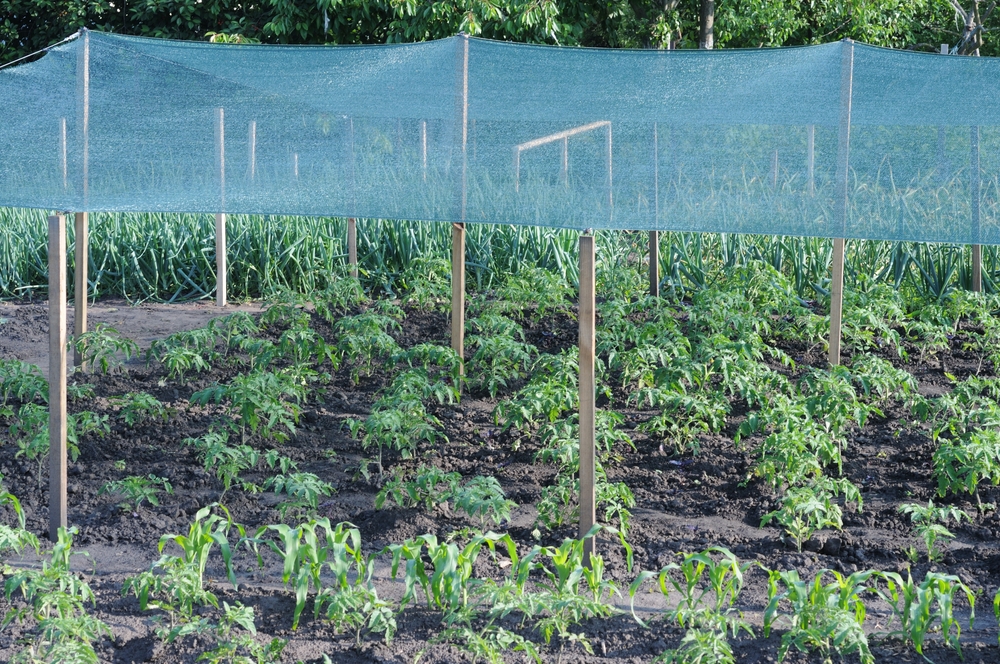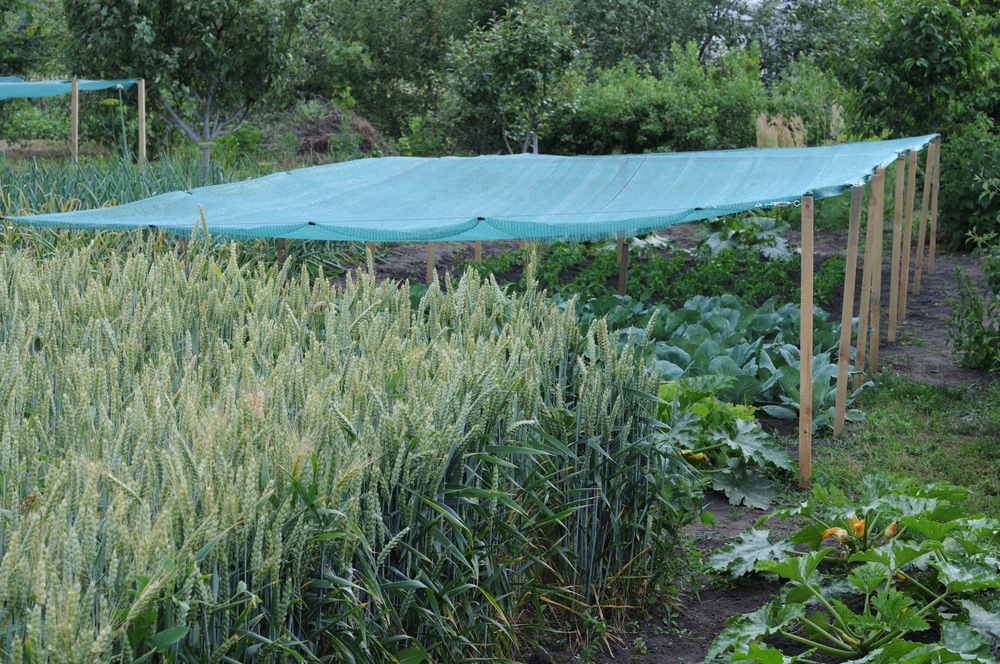
Image Source: Shutterstock.com
Fall gardening might sound serene—crisp air, golden leaves, and the satisfying crunch of soil beneath your boots—but every seasoned gardener knows this season has tricks up its sleeve. As temperatures drop, nature gets a little sneaky. Birds, squirrels, insects, and even the weather itself start competing for your hard-earned harvest.
That’s where garden nets come in—not just as a barrier against bugs, but as a kind of multi-purpose armor for your autumn garden. Think of them as the unsung heroes of fall gardening: quiet, unassuming, and incredibly effective at saving your sanity (and your kale).
Protecting Your Harvest from Feathered Thieves
As summer’s buffet of berries and seeds winds down, birds start eyeing your late-season produce like it’s an all-you-can-eat special. From crows with an attitude to curious robins, your tomatoes, cabbages, and greens suddenly look like open invitations. A simple garden net turns your patch into a no-fly zone without the need for noise makers or scarecrows that lose their charm after a week. The best part is that birds quickly learn to move along when they realize the buffet is closed for the season. In the fall, nets don’t just save crops—they save you from daily frustration and half-eaten vegetables.
Keeping Curious Critters at Bay
If birds are the sky pirates of autumn, squirrels and rabbits are the ground-level bandits. These furry intruders are relentless when it comes to raiding fall gardens, especially when food sources in the wild start thinning out. Garden nets, when properly anchored, form a barrier that even the most determined rodent finds annoying enough to give up on. It’s not just about keeping them out—it’s about teaching them your garden is off-limits. In a season when critters are desperate to stock up for winter, a well-placed net becomes your best line of defense.
Shielding Plants from Unpredictable Weather
Fall weather loves drama. One week it’s warm and sunny, and the next you’re battling sudden frost, pounding rain, or gusty winds that threaten to flatten your kale patch. Garden nets help buffer against those unexpected swings by offering a layer of protection that keeps leaves intact and soil in place. The mesh acts like a subtle windbreaker, softening the impact of strong gusts and even diffusing light frost. It’s like giving your plants a cozy blanket that still lets them breathe—a little autumn armor for your green friends.
Blocking Falling Debris and Leaf Overload
Falling leaves are beautiful, sure, but they can also smother delicate seedlings or trap moisture where you don’t want it. Garden nets come to the rescue again, catching stray leaves before they pile up and block sunlight. They also stop acorns, branches, and other debris from landing on tender plants or freshly seeded beds. You’ll spend less time raking and more time actually enjoying your garden. In a season of constant cleanup, that’s a small miracle worth celebrating.
Preserving Soil and Preventing Erosion
One of fall’s sneakiest challenges is soil erosion. Between heavier rains, wind, and decaying plant matter, your topsoil can wash away faster than you’d expect. A well-placed net helps hold everything together, reducing runoff and protecting your soil’s structure. Over time, this simple trick improves your garden’s long-term health and keeps your nutrient-rich soil where it belongs—feeding your plants. It’s the kind of behind-the-scenes benefit most gardeners don’t even realize they need until they see the difference.
Extending the Growing Season
Just because the days are getting shorter doesn’t mean your growing season has to end. Garden nets can help maintain a more stable microclimate, especially when combined with mulch or low hoops. The mesh traps a touch of warmth, shields seedlings from harsh winds, and gives you a few extra weeks to enjoy fresh greens and herbs. Fall crops like spinach, lettuce, and kale absolutely thrive under this gentle protection. It’s like cheating the calendar just enough to make your neighbors jealous.

Image Source: Shutterstock.com
Discouraging Invasive Insects Without Chemicals
While most pests slow down in fall, a few stubborn ones—like cabbage moths, aphids, and beetles—stick around for the final round. Garden nets provide an eco-friendly way to keep them out without resorting to sprays or harsh treatments. The fine mesh blocks their entry while still allowing air and sunlight to reach your plants. You get clean, chemical-free produce and fewer bug-related headaches. It’s pest control that feels smart instead of stressful, and it’s surprisingly satisfying to see your greens untouched when everything else nearby is getting nibbled.
Helping Pollinators Safely Transition
Here’s the thing about nets—they’re not just for defense. In fall, when pollinators are wrapping up their busy season, you can use nets to guide their activity instead of blocking it. Lightly draped over flowering plants, nets can help direct bees and butterflies toward certain areas while protecting others. It’s a subtle way to manage your garden’s ecosystem without disrupting the natural flow. When the cold truly sets in, you’ll have helped pollinators stock up safely while still protecting your crops—a win-win for everyone involved.
Creating Order and Structure in the Chaos of Fall
Autumn gardens have a certain wild charm, but they can also get messy fast. Between fallen branches, wind-blown mulch, and the slow fade of summer blooms, everything starts looking a little disheveled. Garden nets add instant visual order. They define spaces, protect beds, and give your garden that “still under control” look even when nature is doing its best to undo all your work. The tidy lines of a netted row of greens can be oddly satisfying—a small sign of triumph against seasonal chaos.
Making Cleanup and Transition Easier
When winter finally knocks on the door, every gardener knows it’s time to start clearing and prepping for next year. Here’s another secret: those same garden nets that guarded your plants can make cleanup faster and easier. Lift them up, and you’ll find fewer leaves, less debris, and soil that’s still beautifully intact. Removing nets and composting what’s underneath becomes a breeze. You’ll enter the off-season with a sense of accomplishment—and the smug satisfaction of knowing your garden survived fall’s unpredictability with style.
A Simple Net, a Season of Peace
At first glance, garden nets might seem like a small detail, just another tool in the gardener’s arsenal. But as fall proves year after year, they’re much more than that. They protect, preserve, and bring calm to the chaos of the changing season. Whether it’s saving your crops from feathery thieves, softening the blow of wind and frost, or simply keeping your garden tidy, nets do the quiet work that makes everything else flourish.
Have you used garden nets in your fall garden? Share your stories, tips, or unexpected wins in the comments below.
You May Also Like…
The Drainage Mistake That’s Ruining Your Garden’s Soil Each Winter
The Hidden Benefits of Bare Branches — How Sunlight Changes Your Garden Layout
Why Overripe Fruits Invite More Fall Pests
9 Fall Garden Pests That Arrive Out of Nowhere
10 Plants Deer Target More Often in Fall
Leave a Reply